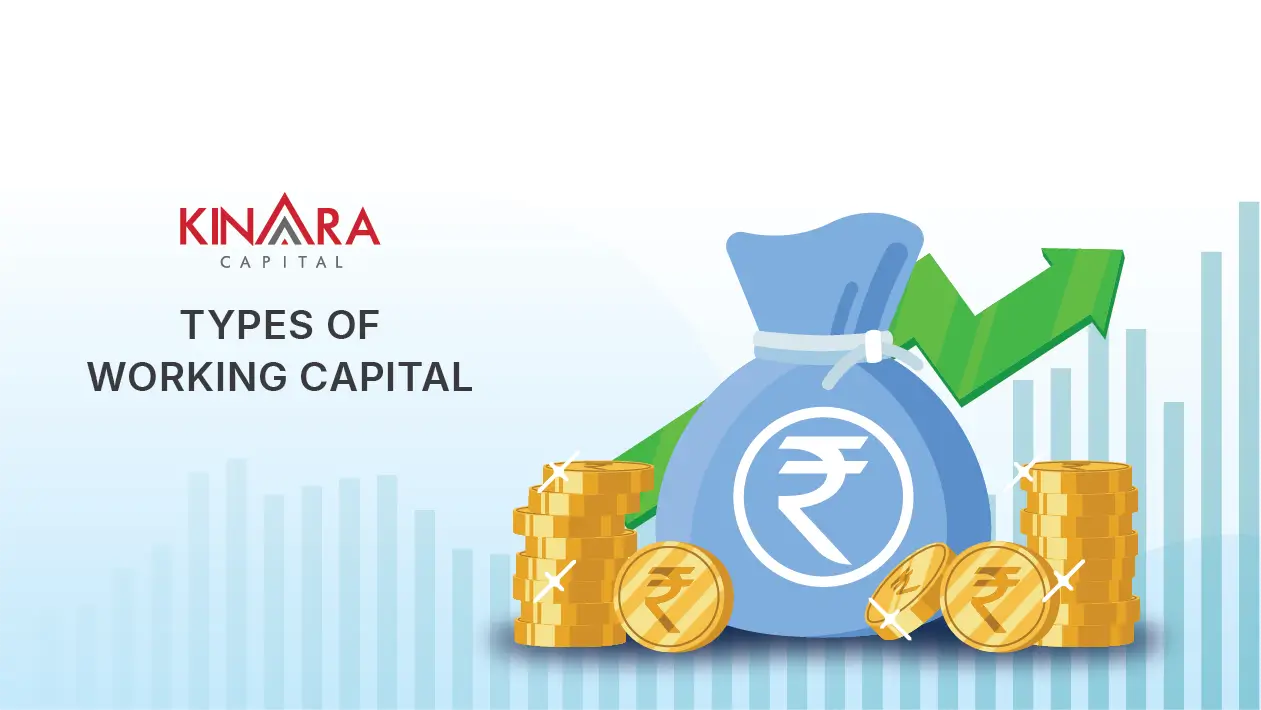
Working capital can be used as a scale to measure the overall efficiency and productivity of a business entity. The working capital of any organization consists of all its assets minus the liabilities. Nevertheless, different types of working capital play essential roles in an organization’s smooth and efficient functioning, and we’ll tell you more about them in this article.
Working capital also indicates the liquidity level of a business for successfully carrying out its day-to-day expenditure while managing accounts, cash, inventory, and due short-term debts.
As discussed above, working capital is essential for a company to meet its short-term obligations and pay its employees, suppliers, and meet other financial obligations such as making payments and paying taxes. It is also important because:
The different types of working capital are based on the balance sheet of the company. Some of the important types that you must know about are:
Temporary working capital consists of the assets required by any organization for a very short period. For example, there is an immediate need for more products, decorations, and festival-specific assets during the festive season. These requirements are considered temporary as they keep changing as per the business’s operations and market situations. If you need temporary working capital, then opting for short-term loans to fund your requirements would be the best option for you, as you can repay it soon after your business starts generating revenue.
Managing fixed assets as compared to current assets is simpler since determining financial requirements for fixed assets requires only the cost of the asset. Whereas for current assets, it is completely different as the value of current assets is dynamic, and it can sometimes get a little tricky to predict the value of it. Thus, to resolve this complexity to some extent, companies find a cost that has been constant through the years by considering past trends. This amount is considered as fixed or permanent working capital, the minimum working capital required by a firm to function smoothly.
Gross working capital consists of a sum of the firm’s assets. These assets are such that they can be converted to cash within a year. The assets typically comprise:
Net working capital is the difference between the existing liabilities and the gross working capital owned by a company.
Apart from the three main categories of working capital, there are other working capital as well. They are as follows:
Negative working capital is a scenario where the current liabilities of an organisation become more than its current assets. As a result, the net working capital becomes negative, thereby making it a Negative Working Capital. While no organisation would want to be in a negative working capital scenario, some organisations remain unaffected even while experiencing periods of negative working capital. An organisation generally looks for funding when they have negative working capital, and once that capital is managed properly, it can be a basis for acquiring business growth.
Most businesses these days like to maintain capital which is more than its day-to-day requirements. Reserve Working Capital is the pool of funds kept separately from the regular working capital to handle emergencies as and when they appear. For instance natural calamities, recessions, and many more.
Businesses require this type of working capital in case of special events that occur very rarely. For instance, funding a marketing campaign or hosting an event for business growth. Now, events of such sort require a lot of funding and as it is a rarely occurring event, it can never be predicted. Therefore, businesses take special working capital, which is a type of working capital loan, to incur such huge expenses.
Majority of the organisations have a season when their business takes a leap from its natural course. During this peak season, organisations require a lot of funding to suffice the additional business needs. And the need is fulfilled by using seasonal working capital. This type of working capital is generally required for a business that caters to seasonal products or services.
The benefits of Working capital loans are as follows:
The bottom line is that to expand, sustain, and establish your business in the market, you must have stable working capital. You can also reach out to us at Kinara Capital, as we believe in transforming livelihoods and local economies by providing quick and flexible collateral-free loans and working capital loans to small business entrepreneurs in India.
With over Rs. 5,900+ crores of loans disbursed across 4,500+ pin codes, we have brought a positive change in the lives of thousands of small business entrepreneurs. We have helped 66,000+ customers from 300+ sub-sectors to expand their MSME businesses. And not only that, we have constantly been trying to make capital accessible for all MSMEs. The loan products of Kinara are best suited for MSMEs to suffice their business needs. On a reducing rate basis, our interest rate starts from 21% per annum. The tenure of the loan starts from 12 months and it goes all the way up to 60 months, depending upon the product. One can avail up to a loan of 30 lakhs. So, what are you waiting for? Also, we have a dedicated customer support team available between Monday – Friday (9.30 AM – 6.00 PM) at our toll free number 1800-103-2683 for any questions or assistance. This ensures that entrepreneurs can get the help they need throughout the loan process.
1) What are the 3 main categories of working capital?
The 3 main categories of working capital are as follows:
2) What is Working Capital Management?
Working capital management is a process by which a company intends to use the company resources efficiently by systematic optimisation and monitoring of its assets and liabilities.
3) What is the ideal ratio for working capital?
The ideal ratio for working capital is 1.5 to 2.
4) What are the 4 main components of working capital?
The 4 major components of working capital are as follows:
